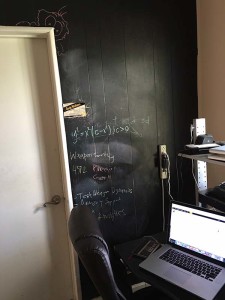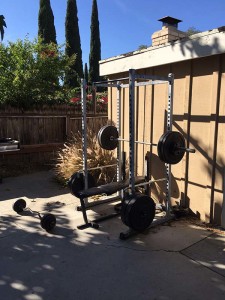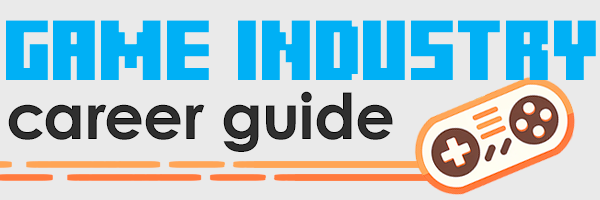The Pros and Cons of Remote Game Development

Gene Walters had his dream job: programming graphics and special effects for video games. What could be better?
Well, how about this: Programming graphics for video games… from home? No frustrating morning commute. No clatter and distraction of a hectic game studio. No need to slip out of your comfy pajamas. Doesn’t that sound even more perfect than perfect?
When Gene made the leap from an in-studio programmer to an at-home programmer, it was the solution to many problems – but it also caused new ones he didn’t expect. We’re speaking with him today to learn how he launched his at-home video game career, how he wrangles the ups and downs of remote employment… and why he might give it all up, if given the chance.
How did you start your career as a Video Game Graphics Programmer?
Ever since playing Doom, around the age of 7, I knew I wanted to create video games. My quest to become a game developer took me from Los Angeles, California all the way to Redmond, Washington to attend DigiPen – a university specializing in computer science and math for “real-time interactive simulations” AKA “games,” which I had found after taking a college and career prep class as a freshman in high school.
I couldn’t imagine that I would one day be getting paid to discuss graphics optimizations and quest loot drops.
After graduating DigiPen, I got an opportunity to officially kick-start my career in game development at Griptonite Games. I had finally made it! The next couple of years I would finally be developing games – and on top of that, the people I worked with were awesome. Sometimes I secretly had to pinch myself in meetings because I couldn’t imagine that I would one day be getting paid to discuss graphics optimizations and quest loot drops. 😛
That job was at the studio. How did you start working remotely?
Two passions coalesced to position me for working from home. The first was love for my family, and the second was love for my job.
While I was working at Griptonite in Seattle, the 2008 “Great Recession” was being a huge bummer back in my home state of California. My Dad had lost his job as an ObjectStar programmer, and was rebuilding his coder-chops for the emerging market in C# and Objective-C. It was nearly 4 years since his layoff, and my childhood home was getting foreclosed with my dad and sister still living it.
I decided on moving home and buying a house. With a heavy heart, I found work at a Los Angeles game studio and put in my 2-weeks’ notice at Griptonite. Telling the homies I was leaving for California was agonizing, when suddenly…
… my engineering lead and my technical director graciously offered me an opportunity to work from home in California instead.
“WOW! OF COURSE I WOULD WANT TO KEEP WORKING WITH THIS BEAUTIFUL TEAM!” It was one of the kindest things anyone has ever done for me. Since January 2012 I have been collaborating with teammates and contributing to studio projects in Seattle, from my home in California.
What’s the biggest challenge of working remotely?

Separating work from home is definitely the biggest challenge of working remotely.
My first year of working from home, I had trouble leaving work. I started working overtime even when it was not mandatory. I would typically work overtime to finish up small tasks here-and-there for friends on other teams that were “off the record”. Too many small tasks add up. But why was this suddenly happening now when it hadn’t been an issue before?
Luckily, having excellent leadership, my manager helped me break this cycle by finding the root causes of overtime. When working in the studio, the whole team sits together so that leads and producers are typically in earshot of all the inner workings. Since my collaboration happens over chat and email, my leads weren’t able to organically listen in on all the “off-the-record” tasks I was accepting. While it’s normal to get looped into a few tasks that fall outside of sprint planning, it is also crucial that leads and producers are aware of extra tasks in order to properly schedule timelines.
You solved the problem by learning to say “no?”
Working on a task for a friend, isn’t a bad idea, it’s actually super helpful – so long as it properly fits into scheduling.
After realizing I had a problem with workload short sightedness, my lead suggested I started making sure to always loop him into new tasks. Your lead can see further into the project’s future, and thus can see obstacles you might not have realized existed. They might respond, “Go for it!” or “Let’s work on that next week after we lock down so-and-so deadline.” In either case, it’s a win for both parties.
Even if the task takes less than an hour to complete, dropping your lead a quick message, “Hey, I was thinking about tackling this font-loading bug over on ProjectX”, helps to alleviate overtime.
How do you separate “work” from “home” when they’re the same place?

That’s another issue with working from home that, even after almost 4 years of experience with it, is still a bit hard to overcome. After spending 8+ hours a day in an office, where do people go? A typical answer might be, “home”, or “somewhere to relax”, but what if “home” is the same place you were working? Staying in the same room for 24 hours a day can start to feel like a prison.
If you can’t beat them, join them… so I started using prison techniques to feel better. My house is basically broken up into my office, and a place I call “The Yard.” The Yard is my backyard lawn where all the heavy weightlifting happens. You only need the essentials: a squat rack, a bench press and some iron free weights. Challenging the laws of inertia gives me fresh air, a change in scenery, and a stupid pump.
Also, in order to separate work from home I even frequently commute to-and-from work by staying at my fiancée’s house after work instead of my own house.
Being off-site, have you ever felt “invisible” to the team?
My team has always been awesome at keeping me in the loop. Most of my team’s collaboration happens over email or studio chat rooms, which makes it obviously easy and natural to collaborate remotely.
Lots of ideas, however, might be better expressed “I.R.L.” For these meetings, a super friend will carry my “head” (an iPad with FaceTime) into the meeting room. Once at the meeting, we find a place to set my head; generally facing the main speaker, or strategically pointed towards a delicious box of cupcakes. Video conferencing lets me see and hear everything in real time. As long as the iPad speakers are turned up, jumping into the conversation comes easy!
What’s your favorite part of being a remote worker?
The best part of working from home is being close to family while still having an awesome job. I suppose this isn’t an exclusive attribute of working from home, since technically you could have a great job next to home, but for my personal situation, staying with my studio is awesome.
Crunching (working back-to-back overtime) can also be easier when working from home since after a late night you can immediately crash out in bed. Also, even though I sometimes still “commute” to work, I definitely spend less time spent in traffic; less time in traffic means less stress, lower gas bills, and coincidentally better car insurance rates. 😛
The best part of working from home is being close to family while still having an awesome job.
Another advantage of working from home is the quiet atmosphere. In studio, I am easily absorbed into water-cooler conversations, and I can never turn down a lunch outing or gym break. The lack of distractions at home tends to help me stay focused for longer periods of time.
What’s your least favorite part?
My least favorite part of working remotely is missing friends. Team lunches, night hikes, rock climbing, and hugs all have to wait until occasions when I fly up to Washington to be on-site. It’s also hard to test your max bench without a spotter. It gets lonely sitting in a room all day by yourself.
What tools do you use to work productively with your remote game team?
For starters, it’s safe to assume you’ll want 3 to 5 days to invent a home setup. There’s no sacrificing cost when it comes to making a transition to working from home.
- A powerful PC: Make sure your workhorse PC is top notch, matching or even surpassing the machines you’re comfortable with at work. Also, make sure to have reliable and high-speed Internet; you’ll be communicating <em>a lot</em> over video conferencing, email and chatting. Of course, code commits and project syncs will absorb bandwidth as well. My IT brethren helped me a ton in finding and installing all the vital software I’d be using on my local machine.
- E-mail: A typical day will involve reading and responding to about 10 emails (this number was <em>much</em> higher, around 50, before the team started using Slack).
- Slack: All day, everyday. Slack is an awesome chat app that the whole team uses to collaborate. There are chat rooms for major topics like UI, or Scheduling, or Random Funny Stuff. There are also private chats or small rooms for peer-to-peer discussions that might be too nitty-gritty for the whole team to read. Slack allows for ideas and Q&A to organically be hashed out in real time. If the idea of having an entire team of people collaborating all at once sounds noisy, it surprisingly is not. If you need to stay in the zone, Slack helps filter out less important conservations by having a special alert whenever someone mentions your real name, or user name.
- iPad with FaceTime: Being offsite, my next best option is FaceTime. About once each day. Nothing beats face-to-face interaction for hashing out difficult problems.Video conferencing apps are nice since they can be installed onto tablets and are thus portable. My “face” can be moved into conference rooms, or used to look at hand drawn sketches/prototypes.
Do you think you’ll ever go back to working on-site?
About once every 2 months, the company will fly me up to Washington to stay one week in-studio. Most people in my situation would need to stay in a hotel, but once again my super friends from work and school come to the rescue by allowing me to crash at their pads. I actually look forward to the 2,000 mile commute!
But I do miss being in studio full time, so I would like to return to being full-time on-site in Seattle, once responsibilities in California settle down. The camaraderie and collaboration that occurs in person is amazing. Being on-site also lends more opportunities to mentor junior developers, which I look forward to as my professional experience grows.
You can connect with Gene on LinkedIn. If you like this interview, please share it on the social mediaz.
Read my new book!
Making games for a living is an incredibly rewarding career, but it’s hard to break in unless you have insider knowledge. This book levels the playing field.


Leave a Reply